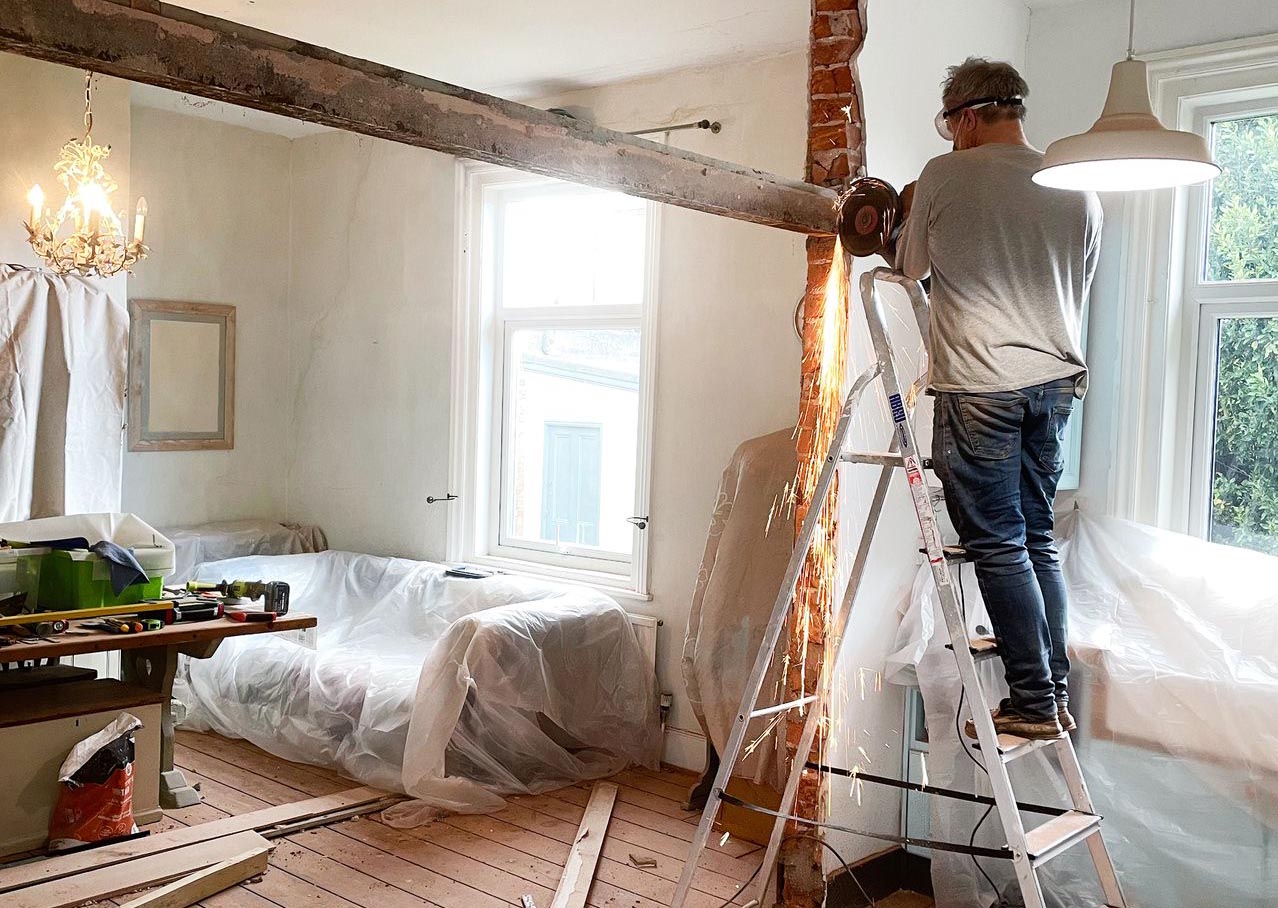Imagine enhancing your living space while potentially lowering your tax burden. With Federal Tax Deductions for Home Renovation, this vision can become a reality. These valuable incentives allow you to deduct certain renovation expenses from your taxable income, potentially reducing your overall tax liability.
Federal Tax Deductions for Home Renovation encompass expenses related to improvements that significantly enhance your home’s value or livability. These deductions cover a diverse range of renovations. In this article, you will learn the general rules and the exceptions for home improvement tax deductions, and how you can take advantage of them. Let’s get started.
To Leverage The Federal Tax Deductions For Home Renovation
- Identify Eligible Renovation Expenses
- Understand Tax-Deductible Repairs vs. Upgrades
- Keep Detailed Records of Expenditures
- Leverage Energy-Efficiency Deductions
- Explore Home Office Renovation Deductions
- Research Historic Preservation Credits
- Maximize Deductions within Legal Limits
- Explore Financing Options For Tax Savings
Motivated? Let’s dive deeper!
1. Identify Eligible Renovation Expenses
To take advantage of the federal tax deduction for home renovation, identify eligible renovation expenses. First, think about capital improvements. These are renovations that increase your home’s value and can lower your tax bill when you sell your home. Then, consider energy-efficient improvements. If you install qualified energy-generating systems like solar panels or geothermal heat pumps, you could be eligible for a federal tax credit.
Don’t forget about medical-related improvements. If you’ve made medically necessary renovations, such as installing ramps or widening doors for wheelchair access, you can deduct them as medical expenses. However, it’s important to remember that aesthetic or architectural expenses aren’t deductible, and any improvements that increase your home’s value can’t be claimed as a medical-related expense.
2. Understand Tax-Deductible Repairs vs. Upgrades
To maximize federal tax deductions for home renovations, understanding the difference between tax-deductible repairs and upgrades is crucial. Repairs are generally costs you incur to keep your property in a normal efficient operating condition. You can often deduct these costs in the tax year you pay for them.
On the other hand, upgrades or improvements, such as adding a new room or upgrading your kitchen, add value to your home. Typically, you capitalize these and depreciate them over time.
However, there’s an exception for energy-efficient improvements. If you install qualified energy-generating systems like solar panels, you could be eligible for a federal tax credit.
Remember, routine maintenance and repairs normally aren’t tax deductible and can’t be included in the basis of your home.
3. Keep Detailed Records of Expenditure
To choose a home renovation approach that optimally leverages federal tax deductions, keep detailed records of your expenditures. Here’s how you can do it: Start by keeping all project-related receipts. This includes receipts for materials, labor, and any other costs associated with the renovation. These receipts serve as proof of the expenses you’ve incurred.
Once you’ve filed a federal tax return, the IRS recommends keeping your tax records for three years after the date you filed or two years after the date you paid taxes—whichever is later. This is important in case of any future audits or discrepancies.
Don’t forget that these records should be organized and easily accessible. You might consider using a filing system or digital tools to keep track of these documents.
>>>PRO TIPS: How to File Taxes When Living Abroad
4. Leverage Energy-Efficiency Deductions
To opt for a home renovation strategy that maximizes your federal tax benefits, leverage energy-efficiency deductions. Starting from the 2023 tax year, you may qualify for a tax credit of up to $3,200 if you make qualified energy-efficient improvements to your home. The credit equals 30% of certain qualified expenses, including qualified energy efficiency improvements installed during the year, residential energy property expenses, and home energy audits.
There are limits on the allowable annual credit and the amount of credit for certain types of qualified expenses. For example, the maximum credit you can claim each year is $1,200 for energy property costs and certain energy-efficient home improvements, with limits on doors ($250 per door and $500 total), windows ($600), and home energy audits ($150).
Keep in mind that the credit is nonrefundable, so you can’t get back more on the credit than you owe in taxes.
5. Explore Home Office Renovation Deductions
To get the most out of your federal tax savings by maximizing home renovation deductions, explore home office renovation deductions. If you use part of your home exclusively and regularly for business, you may qualify for the home office deduction.
You can deduct the cost of renovations over time by applying a formula outlined in the IRS Publication 9462. This works out to a little over 2% for the first few years, then slowly decreases.
Also, you can deduct 100% of the cost of improvements made just to your home office. Expenses that relate to a separate structure not attached to the home will qualify for a home office deduction, only if you use the structure exclusively and regularly for business.
Remember, employees are not eligible to claim the home office deduction. Always consult with a tax professional to ensure you’re following all guidelines and maximizing your deductions.
6. Research Historic Preservation Credits
To maximize federal tax deduction for home renovation, research historic preservation credits. If you’re renovating a historic building for income-producing purposes, you could be eligible for a tax credit of 20% of your qualified expenses. But remember, your building needs to be certified as a historic structure by the National Park Service.
Also, the rehabilitation work must meet the Secretary of the Interior’s Standards for Rehabilitation. It’s a fantastic way to preserve our history while getting a tax break. But before you apply, consult your accountant or tax advisor to make sure this credit is beneficial to you.
7. Maximize Deductions within Legal Limits
To take advantage of federal tax deductions for homes, maximize those deductions. First, consider making improvements when you buy your home. If your mortgage includes extra money for renovations, you can include the interest on this amount in your mortgage interest deduction.
Also, if you take equity out of your home for improvements, you can include the interest on this money as home mortgage interest.
Then, medically necessary improvements can be included as a medical expense. But remember, the deduction amounts must be reasonable, given their medical purpose.
Bear in mind that installing qualified energy-generating systems can lower your taxes. You can get a federal tax credit of 30% of the cost.
8. Explore Financing Options For Tax Savings
To maximize federal tax deduction for home renovation, explore other financing options. First, consider tapping into the power of home equity loans or lines of credit (HELOCs). These financing options allow you to borrow against the equity you’ve built up in your home, potentially offering lower interest rates and tax-deductible interest payments.
Next, investigate home improvement loans, which are specifically designed to finance home renovations. While their interest rates may be slightly higher than HELOCs, they often come with fixed interest rates, providing predictability for your financial planning.
Remember, to qualify for these tax deductions, the renovations must be permanent improvements to your home. Consult a tax professional to determine if your specific renovations qualify for these benefits.
Recap
To Leverage federal tax deduction for home renovation, spot eligible renovation costs. Distinguish deductible repairs from upgrades. Note every dime spent – meticulous records are key. Opt for energy-efficient choices to boost deductions. For home offices, uncover specific renovation deductions.
Check out historic preservation credits – your reno might have historical value. Maximize deductions wisely, and stay within the legal lines. Think financing – explore options for tax savings. Navigate the tax maze with these steps, and your home renovation becomes a smart investment with added financial benefits.
This post is to be used for informational purposes only and does not constitute legal, business, or tax advice. Each person should consult his or her own attorney, business advisor, or tax advisor with respect to matters referenced in this post. . For comprehensive tax, legal or financial advice, always contact a qualified professional in your area. S’witty Kiwi assumes no liability for actions taken in reliance upon the information contained herein.








No Comment! Be the first one.